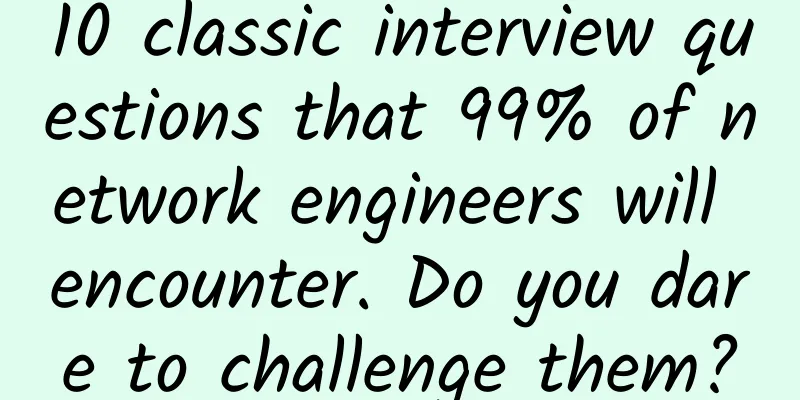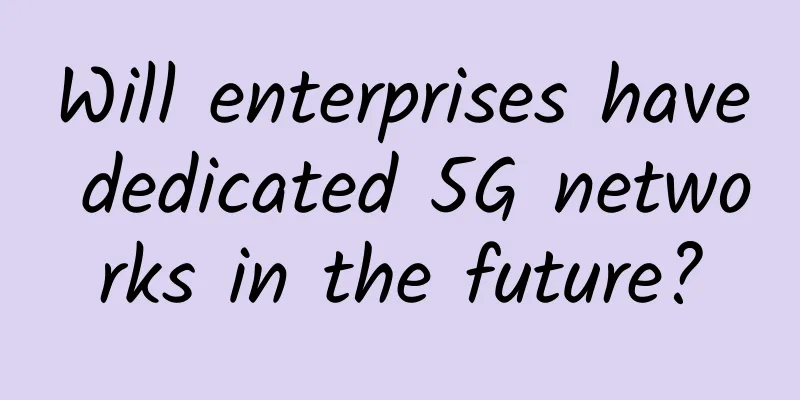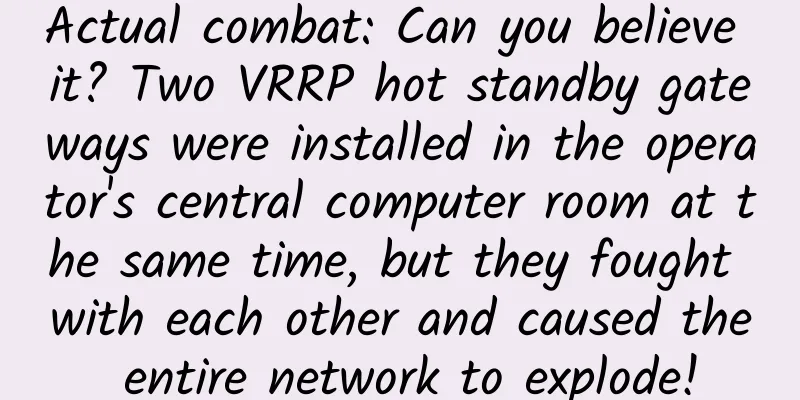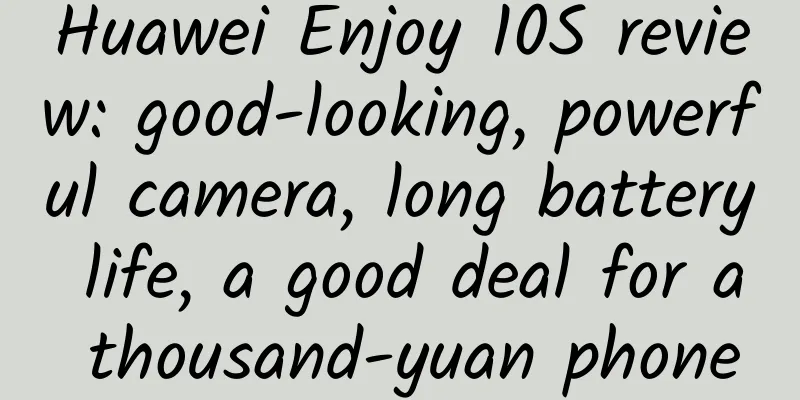10 classic interview questions that 99% of network engineers will encounter. Do you dare to challenge them?

|
1. Introduce the three-way handshake of TCP connection? Follow-up question: Why does TCP need to handshake three times? Three-way handshake:
Follow-up question:
Because the message lifetime may exceed the TCP request timeout, if a connection can be established with two handshakes, A's message is stranded in the network due to some problems. When the message times out but the connection is released, this timed-out connection is transmitted to B. B thinks it is a new request from A to create a connection, and then confirms the connection. However, A knows that this is a timed-out connection, so it directly discards B's confirmation data, resulting in only B unilaterally establishing the connection. And it keeps waiting for A to send data, so B's resources are wasted. 2. Introduce the four waves of TCP disconnection? Question: Why does TCP need to wave four times? Four waves:
Follow-up question:
3. Why is it three times when connecting and four times when waving? Question 1: (1) Assuming that the connection is made twice, the message left in the network by A is transmitted to B after a period of time, and B confirms the connection. B unilaterally establishes the connection, and A discards B's confirmation data message. B will keep waiting for A to send data, resulting in a waste of B's resources. Official explanation: Twice: No, to prevent the invalid (2) We know that after three attempts, the two parties have established a connection, and a fourth attempt is completely unnecessary Question 2: Ensure that all data can be transferred After A sends FIN, B may be transmitting data to A, so it will not be closed immediately. When all data is transmitted, it will send ACK to confirm the disconnection. 4. What is the process of TCP syn attack? Follow-up question: How to defend against it? Attack principle: After B receives the SYN message, it will add the corresponding semi-connection record to the queue, and then wait to receive the handshake packet. If the handshake is successful, the semi-connection record will be deleted from the queue; or when B does not receive A's confirmation packet, it will resend the request packet until the timeout, then the record will be deleted from the semi-connection queue. The half-connection records stored in the server's TCP protocol stack are limited. When the server receives a SYN-type DOS attack, the queue will quickly fill up. The client forges a large number of non-existent IP addresses in a short period of time and continuously sends SYN packets to the server. The server replies with confirmation packets and waits for the client's confirmation. Since the source address does not exist, the server needs to continuously resend until it times out. These forged SYN packets will occupy the unconnected queue for a long time, and normal SYN requests will be discarded. The target system will run slowly, causing severe network congestion or even system paralysis. The server will then no longer accept new network connections, causing normal clients to be unable to access the server. defense:
SYN Cookie uses a Cookie to respond to TCP SYN requests. During a normal TCP connection, when the server receives a SYN packet, it returns a SYN-ACK packet in response, and the half-open connection state waits for the final returned ACK packet. The server uses a data space to describe all unresolved connections, but the size of this data space is limited, so the attacker will fill up this space. During the execution of SYN Cookie, when the server receives a SYN packet, it returns a SYN-ACK packet. The ACK sequence number of this data packet is encrypted. It is calculated by HASH using the source address and port number, the destination address and port number of the TCP connection, and an encrypted seed. Then the server releases all states. If an ACK packet is returned from the client, the server recalculates the Cookie to determine whether it is the return packet of the previous SYN-ACK. If so, the server can directly enter the TCP connection state and open the connection. In this way, the server can avoid waiting for a half-open connection. 5. What is a sliding window? Follow-up question: Why does a sliding window appear? Sliding Window: It is used to tell the sender the size of the data that can be sent or the window marks the size of the receiver's buffer. The window refers to how much data is sent in batches at one time. Why does a sliding window appear? In the confirmation and response strategy, each time a data segment is sent, an ACK confirmation is required. After receiving the ACK, the next data segment is sent. In this way, confirmation is required every time, which leads to poor performance. The sliding window mechanism will send multiple data at a time to improve transmission performance. 6. How does TCP implement flow control and congestion control through the sliding window protocol? By setting the size of the sliding window and using ACK to inform the sender of the size of its own buffer, the sender can send at an appropriate speed to achieve flow control; The sender determines the window value based on the network congestion situation. When the sender actually determines the send window, it should take the minimum value of the "notification window" and the "congestion window". 7. Describe the difference between TCP and UDP? UDP:
TCP:
Question: How to achieve good transmission with UDP? The introduction of sequence numbers ensures the order of data, the confirmation mechanism ensures that data can reach the other end, and the retransmission mechanism ensures that data is discarded due to timeout. 8. What are the timers in TCP?
9. What is CDN and how does it work? Q1: CDN is a content distribution network Question 2: CDN adds a cache layer between the user and the server, which is achieved by taking over DNS and directing the user's request to the cache server to obtain the data of the source server. 10. What is DNS? What is the DNS resolution process? Q1: DNS is the Domain Name System, a distributed database on the Internet that maps domain names and IP addresses to each other. Question 2:
|
<<: Hard-core dry goods: HTTP timeout, repeated requests must see the pitfalls and solutions
>>: Wenku: We need to further explore 5G applications
Recommend
The Ministry of Industry and Information Technology introduced a spectrum auction mechanism, which is a new model for 5G spectrum allocation.
Recently, my country promulgated the newly revise...
The Importance of PoE in Surveillance and Remote Security Systems
Many devices on the network today, such as IP cam...
RAKsmart: Hot-selling servers starting from $46/month, Hong Kong/Korea/Japan/US data centers, half price for the first month
A few days ago, we shared information about RAKsm...
Ministry of Industry and Information Technology: Increase support for 5G enhanced technology and 6G technology research and development
The Ministry of Industry and Information Technolo...
Why Wi-Fi will not disappear but become more important in the 5G era?
This article is reproduced from Leiphone.com. If ...
Foreign netizens are discussing: China's 6G technology is coming out soon, but we are still eager for 4G
China's 5G technology has reached the world&#...
Huawei FusionServer RH8100 adds another option to the mission-critical server market
With the transformation from "Made in China&...
5G is no longer dependent on operators, and 50 companies have been approved to build their own private networks
5G is not just for operators; vertical industries...
Aruba: Modernizing the network to enable ubiquitous connectivity
Network edge is an inevitable trend, and user nee...
Bricklayer Los Angeles CN2 GIA (DC6)/Japan Softbank special price $46.6/year
[Restocked again on 10.15] Bandwagonhost has launc...
The road ahead is long and arduous. When will 5G packages become available to ordinary people?
"I won't buy any non-5G mobile phones&qu...
The four major equipment manufacturers compete for 5G. Who will have the last laugh?
In 2019, the dispute over 5G never stopped. Wheth...
Nexril: $9/quarter KVM-1GB/15G SSD/1TB/Dallas data center
Nexril is a site under Corex Solutions, LLC. It w...
Because 4G cards do not meet security requirements, you may need to replace your SIM card to use the 5G network
With the accelerated deployment of 5G networks an...
Choosing a PoE Standard for Your Design: PoE, PoE+, and PoE++
Power over Ethernet standards have important diff...









